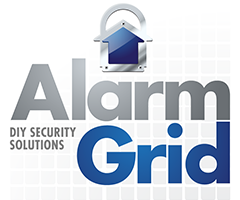What is the Alarm.com Limit for Z-Wave Devices?
The Alarm.com limit for Z-Wave devices is a maximum of 122 unique Z-Wave devices for a single panel. If you add any additional Z-Wave devices to your Alarm.com Panel beyond the limit, then they will not be pushed over to Alarm.com for remote operation. Only local operation will be possible.

Being able to control Z-Wave devices remotely through Alarm.com is a popular feature of the platform. This feature allows you to access the Alarm.com Mobile App or the Alarm.com Website to control your programmed Z-Wave devices from pretty much anywhere in the world. You can also use Alarm.com to create smart scenes for your Z-Wave devices so that a single or a set group of multiple Z-Wave devices activate automatically based on a routine schedule or with predetermined system events.
Normally, when you pair a Z-Wave device with your system, it will be automatically pushed to the Alarm.com servers. This occurs as soon as Alarm.com refreshes the information from your panel and performs a proper panel sync. Any new Z-Wave device that you have added since the last sync will then automatically appear on Alarm.com. Likewise, if you clear a device from your Z-Wave network locally, then it will also be deleted from Alarm.com. This normally works without incident and happens every few minutes. But Alarm.com will stop accepting new Z-Wave devices once you reach the maximum device limit.
If you have an Alarm.com System with 122 different Z-Wave devices, then they should all be pushed over to Alarm.com without issue. But when you go to add a 123rd Z-Wave device, then that device will not be pushed over to Alarm.com. It will still appear on the panel for local control (if supported by the panel), and it will still be part of the Z-Wave network. But it will not be made available on the Alarm.com Mobile App or Website for remote access and inclusion with Alarm.com smart scenes. This will be the case for any Z-Wave device beyond the Alarm.com 122 device limit.
Most Z-Wave controllers, including Alarm.com Security Panels, will support a maximum of 232 Z-Wave devices for local control. A notable exception is the Qolsys IQ Panel 2 Plus, which caps out at 152. More information on IQ Panel 2 Plus Z-Wave limits can be found in this FAQ. But even then, that 152 device limit is still greater than the 122 device limit for the Alarm.com platform. Why Alarm.com restricted the device limit to just 122 Z-Wave devices was likely due to networking and latency considerations. But nonetheless, trying to use more than 122 Z-Wave devices with a single Alarm.com System will result in any additional devices not showing up on Alarm.com.
If you are wanting to use more than 122 unique Z-Wave devices with your Alarm.com Security System, then it is recommended that you only pair 122 Z-Wave devices to start. Then, wait for Alarm.com to perform a network discovery, and make sure that all of these devices successfully appear on Alarm.com for remote access and control. Then go back and pair any remaining Z-Wave devices with your Alarm.com Panel. Understand that these additional Z-Wave devices will not appear on Alarm.com. If you already have 122 unique Z-Wave devices pushed from one panel to your Alarm.com account, then you must go and clear devices to make space for new ones.
There are a number of special considerations to take into account when using Z-Wave devices in conjunction with Alarm.com. In most cases, a user should not attempt to push more than five (5) Z-Wave Thermostats from a single Alarm.com Panel to the Alarm.com servers. Attempting to do so could result in abnormal behavior and performance. An exception applies to the Qolsys IQ Panel 2 and IQ Panel 2 Plus running a Firmware Version of 2.3.0 or higher. For those systems, a limit of ten (10) Z-Wave Thermostats is advised.
In addition, if using more than ten (10) Z-Wave lights, where individual light status is desired when checking status through Alarm.com, there are also certain rules to take into account. By default, the first ten lights to be added to Alarm.com will automatically be enabled for light status updates. Lights eleven (11) and higher will not be enabled automatically, but you can disable light status for one of the first ten (10) lights, in order to enable light status for a light that is number eleven (11) or higher. In addition, Alarm.com has certified certain Z-Wave Plus lights that can provide current status, even if more than ten (10) are used. The full details are available here.
There is also a special consideration for door locks. Since these devices are battery-powered and do not repeat Z-Wave signals, it is unlikely that you would be able to use a mass group of Z-Wave locks with a panel, unless there are other Z-Wave devices in the immediate vicinity to act as repeaters. It is advised that you have at least one (1) Z-Wave device to serve as a repeater for any Z-Wave lock on your network. This repeating Z-Wave device will need to be in direct Z-Wave range of the lock and either the controller, or another repeating Z-Wave device. Check your Z-Wave device and controller for expected range.
Did you find this answer useful?
We offer alarm monitoring as low as $10 / month
Click Here to Learn MoreRelated Products
Related Videos
Related Categories
- Answered



